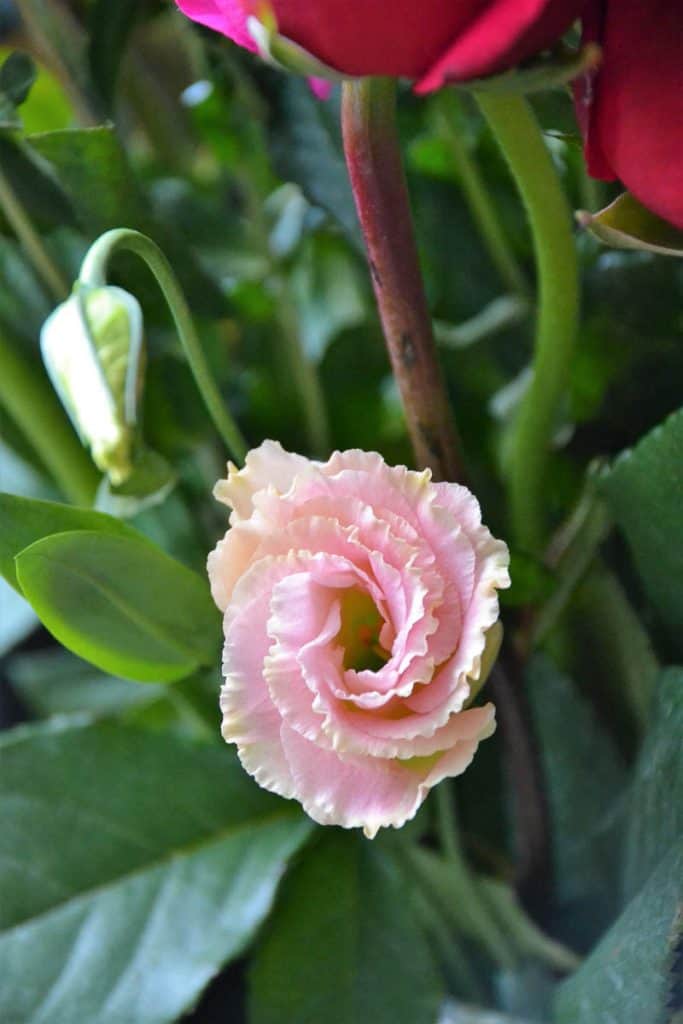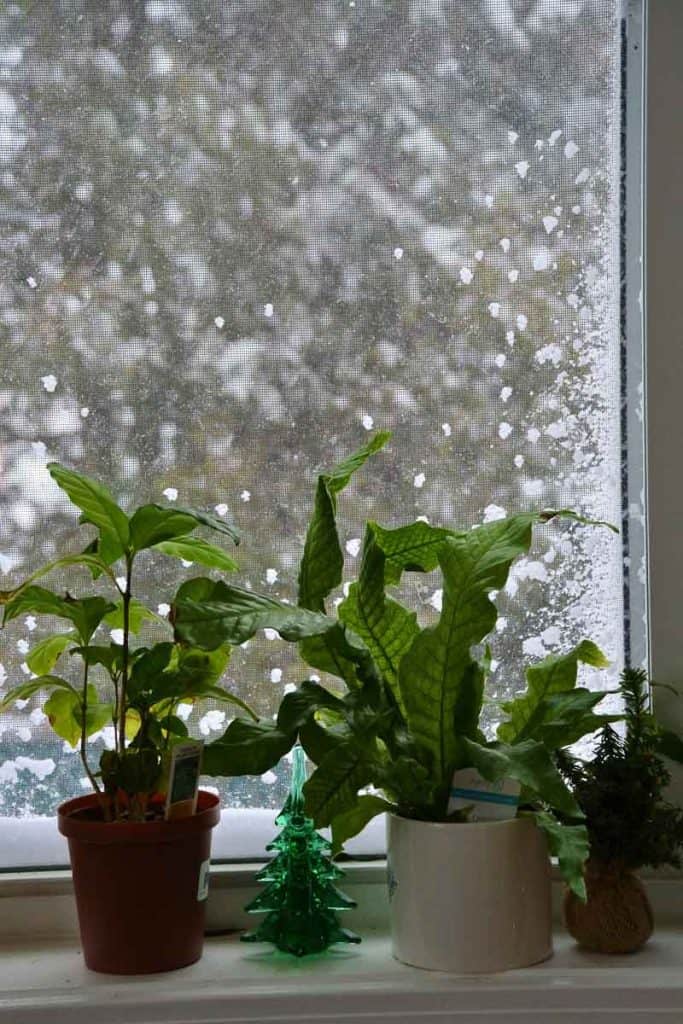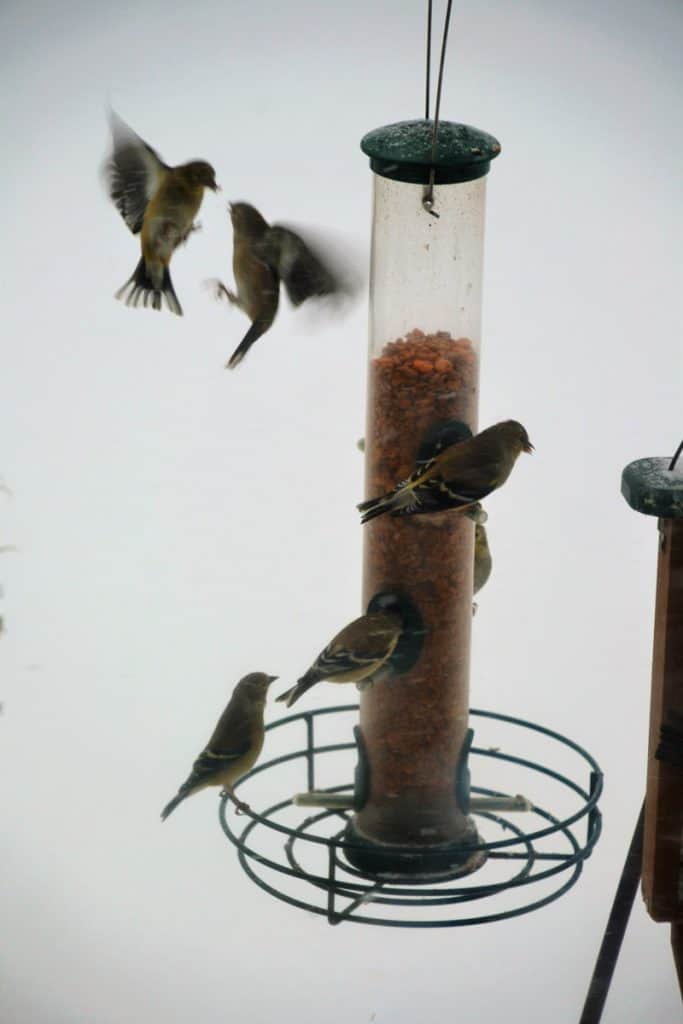Here’s what’s blooming in town this week to make your walks more enjoyable
Saturday’s blizzard dumped a lot of snow on Saugus and tied the record with February 17, 2003, in the Greater Boston area for the most snow in a 24-hour period. Snowstorms like this change the landscape for several days, longer when the temperatures remain below freezing, by adding new features to the terrain and hiding others. Mountains shaped like the Matterhorn have appeared at the edges of parking lots along Route 1, and small valleys and streams have vanished from view. My outdoor flowers – the heath ((Erica darleyensis ‘Mediterranean Pink’) that has been blooming all month and the Lenten rose (Helleborus orientalis), whose flower buds seem to be frozen in time – are both snuggled under the blanket of snow this week, so I am relying on my amaryllis and a cut bouquet for some color indoors.
While February has arrived and Valentine’s Day is right around the corner, there are lots of interesting cut flowers available in addition to roses. On our dining room table today, we have an intriguing combination of deep pink roses, pale pink lisianthus, raspberry-toned Persian buttercup and orange safflowers in a clear vase.
Lisianthus (Eustoma russelliana) is a southwestern annual also known as Texas bluebell or prairie gentian. Flowers come in purple, pink, white and greenish yellow. Lisianthus is its former genus name, but it seems to have stuck as a common name. It is native to the Great Plains.
Persian buttercup (Ranunculus asiaticus and hybrids) is a double-flowering relative of buttercup which has flowers ranging from vivid shades to pastel tints in red, pink, yellow, orange, purple and white.
Safflower (Carthamus tinctorius) may be best known as a plant that produces cooking oil, but safflower seeds are a popular bird seed and the flowers have become popular in bouquets. The flowers are shaped like those of thistle, and it is in the same large Aster family (Asteraceae). While unrelated to saffron, which comes from a crocus, Spanish settlers in the southeastern United States found they could use this plant as a substitute for the red-orange dye colors saffron produced.
Winter is also a time when we especially enjoy our houseplants. The north facing windows don’t get much sunshine, so the plants that do well there must tolerate low light. Among these are several kinds of ferns. Since many fern species thrive in shady sites, it is not surprising that they can tolerate low light indoors as well. Among the most popular houseplant ferns are the rabbit’s foot fern (Davallia feejeensis), Boston fern (Nephrolepis exaltata‘Bostoniensis’), staghorn fern (Platycerium spp.) and crocodile fern (Microsorum musifolium), although there are also several others. The popular asparagus fern (Asparagus densiflorus) is not actually a fern, but a species of asparagus. The greatest challenge to growing ferns indoors is that most homes are very dry in winter, so the fronds may need an occasional misting with water, or they may benefit from being situated near a humidifier. An enclosed environment with other plants, like a terrarium, may also provide the needed humidity.
Crocodile fern (Microsorum musifolium or Polypodium musifolium) is also known as alligator fern and gets its common name from the vein pattern on its foliage. They are native to Malaysia.
Staghorn ferns (Platycerium spp.) are several different species of fern from Eurasia. These and the crocodile fern are epiphytes, which means that in their native habitat they can grow on branches and require very little soil to thrive.
Rabbit’s foot fern (Davallia feejeensis) gets its name from the fuzzy, light brown rhizomes which often grow long enough to extend out over the pot. The fern fronds are green and lacy. The species epithet proclaims it to be a native of Fiji.
Boston fern (Nephrolepis exaltata ‘Bostoniensis’), also sometimes called sword fern, is a large evergreen fern that got its common name from being a very popular houseplant in Victorian Boston. It is still widely available and popular, but there are also new varieties, including the smaller Nephrolepis exaltata ‘Fluffy Ruffles,’ which has curled edges on its fronds.
Editor’s Note: Laura Eisener is a landscape design consultant who helps homeowners with landscape design, plant selection and placement of trees and shrubs, as well as perennials. She is a member of the Saugus Garden Club and offered to write a series of articles about “what’s blooming in town” shortly after the outbreak of the COVID-19 pandemic. She was inspired after seeing so many people taking up walking.







